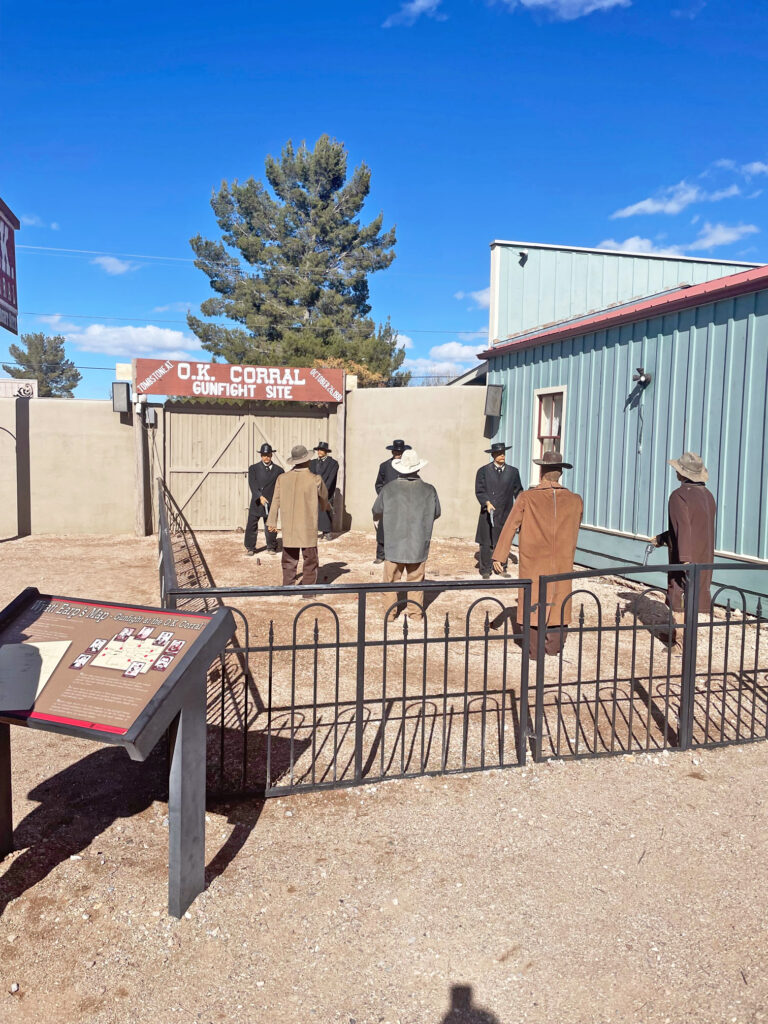Clay County histories
Markus Krueger | Program Director HCSCC

Robots at the OK Corral
I found myself in Tombstone, Arizona, a few weeks ago. As I toured the OK Corral and ate a Tombstone brand frozen pizza in the Doc Holiday Saloon, I wondered to myself: how come Tombstone is famous as a Wild West town, but Moorhead’s isn’t?
I’m not complaining, I’m genuinely interested in why things become famous. I’ve always wondered why the Mona Lisa is the world’s most famous work of art when it wouldn’t even crack my list of 50 favorite paintings (my answer: when France was becoming the world’s art capital, this was a rare painting by a Renaissance master that was already in Paris, and it became famous for being famous after that). What is it about Tombstone in 1881 that the world finds so much more interesting than Moorhead in 1872?
Well, it can’t be denied that the feud between the Earp brothers and the outlaw band called the Cowboys is an interesting story. The Moorhead gunfight between Shang Stanton and Slim Jim Shumway that resulted in the creation of Clay County’s government left only one fewer corpse than Gunfight at OK Corral, but Tombstone’s story doesn’t end there. The Cowboys retaliate with an attempted assassination of Virgil Earp and the murder of Morgan Earp. That caused Wyatt Earp, Doc Holiday, and friends to launch the “Vendetta Ride” that killed four Cowboys suspected in Morgan’s murder. And since the local Tombstone newspaper was a member of the Associated Press, Americans around the country read the unfolding story in their local newspapers. Tombstone became infamous.
After the dust of the Wild West settled, we grew nostalgic for a rowdy past that was safely behind us. Around the turn of the century, Americans clamored for stories of the lawless West that was tamed a generation before, and Tombstone benefitted from having long-lived survivors willing to market their stories. In the early 1900s, Wild West gambler and lawman Bat Masterson moved to New York and became a journalist. Although he wasn’t at the OK Corral, Bat was old friends with Wyatt Earp from Tombstone and Dodge City, and his writings about his experiences ensured his friends and the towns associated with them were remembered.
Wyatt Earp himself was blessed with a long and fascinating life. He dictated an autobiography and, toward the end of his life, he was a consultant on some of Hollywood’s early Westerns. He befriended early silent film stars and directors, and the movies were good to him over and over and over again. Tombstone city historian Don Taylor counts 28 movies made about Tombstone and the Earp brothers.
Tombstone, like Dodge City and Deadwood, cashed in on Old West nostalgia and became a tourist town. The Earps were only in Tombstone for two years, but the main drag is filled with bars and restaurants named for them and their friends. Moorhead, meanwhile, went on with its life. We think of Moorhead as a pleasant college town, a nice place to raise a family, and the kind of place where locals sail to Norway in a Viking Ship. Sure, we have a wild past, but there’s only so much you can put in a visitor’s brochure.

